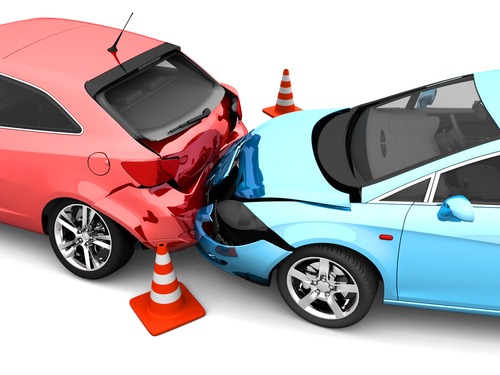Your defensive driving program should stress how to avoid collisions and how to drive safely in the dark.
 |
Collisions are a major cause of injury and death in traffic accidents. The main types of collisions are:
- Head-on collisions
- Hit from behind
- Hitting the driver in front
- Side collisions
Two-car collisions are among the most common kind of traffic accident. About one-third of two-car collisions occur at intersections, so workers need to be especially careful when entering an intersection.
Head-on collisions are particularly dangerous and can be deadly. The key to avoiding them is to keep looking ahead down the road for possible problems. If a crash looks like it’s coming, employees should slow down and even go off the road to the right to avoid a head-on crash.
Rear-end collisions are also dangerous, but they, too, are preventable. For example, employees should:
- Signal their intentions when stopping or turning;
- Be alert for tailgaters;
- Slow down gradually; and
- Leave room in front of you when stopped so that if you are hit from behind, at least they won’t hit another vehicle in front.
Great news! BLR’s renowned Safety.BLR.com® website now has even more time-saving features. Take our no-cost site tour! Or better yet, try it at no cost or obligation for a full 2 weeks.
To avoid colliding with a vehicle in front, employees should take these precautions:
- Look well ahead for hazards, brake lights, and turn signals.
- Always maintain sufficient distance between their vehicle and the vehicle in front so that they have enough room to stop safely.
To avoid side collisions, workers should be sure to approach all intersections with caution, and always look both ways before proceeding—even if they have right-of-way. They should never try to force their way through an intersection if another driver is set on going first. It is better to let the other driver go ahead of you than it is to get into an accident that can be costly and perhaps dangerous to them and to others.
Nighttime Driving
More accidents occur at night than any other time of day. The reason is simple: It is much harder to see at night, and much harder to react quickly when you do see a hazard.
Here are some defensive driving tips you can share with employees for driving at night:
- Keep windshield clean to improve vision.
- Turn lights on 1/2 hour before sunset.
- Increase following distance to 4 seconds.
- Be extra careful on curves and at intersections.
- Switch from high to low beams to keep from blinding other drivers.
- If you have trouble, pull completely off the road and use flashers.
Your one-stop safety management resource, available 24/7. Go here to take a no-cost site tour or here to try it in your own office!
Ride with Us
Navigate your way through the maze of safety regulations and ever-changing demands of your job to a safer workplace. Safety.BLR.com will provide the road map. And we’ll keep you up to date on all the latest news and views, 24/7, from the comfort and convenience of your own desk.
Whether it’s changes in OSHA requirements, news about innovative safety ideas, guidance for creating effective safety plans, or some other vital safety and health issue, you’ll find it all reported and interpreted for you by our safety experts at Safety.BLR.com.
What’s more, this one-stop safety website is a fantastic resource for safety training materials on just about any topic you can imagine.
Training responsibilities become a snap with the website’s thousands of audio presentations, PowerPoints, prewritten safety meetings, toolbox talks, trainer’s guides, and much, much more. You’ll find training tools on more than 120 safety topics along with plain-English compliance analysis and other resources.
At a time when budget considerations are paramount, what makes more sense than an all-in-one safety training and compliance solution?
And BLR has revamped Safety.BLR.com to meet your needs even better. You’ll be amazed by all the features and functionality of the site. Highlights include:
- Side-by-Side State/Federal Compliance. By placing our state and federal regulatory analysis side by side, you easily see how to fully comply with both governmental entities.
- MSDS Library Expansion. The site now provides an immense library of 3.5 million MSDS and SDS forms, with about 10,000 more added or changed every week. Need one? Just call up the chemical by name, manufacturer, product group, or CAS number, then print it out.
- Newsletter Wizard. If you’ve ever wanted to publish a safety newsletter but felt lacking in editorial skills, this new addition is for you.
- Plan Builder. Select from our library of safety plans, customize them to suit your company’s needs, and assemble them into collections you can save in our personal library.
We’re pretty excited about Safety.BLR.com and all of its enhancements, and we’re eager for you to experience it, too. That’s why we’ve created a complimentary site tour, available here. It takes just 5 minutes.
If you like what you see, you’re invited to try the site at no cost and with no obligation. We’ll even give you a complimentary special report for doing so. Go here to take a 5-minute tour of Safety.BLR.com. It may be just what you’re looking for.
